Your Carpet Guide
Carpet – Before You Buy
We believe that knowledgeable customers make the best decisions, so explore this guide to learn essential information before buying carpet.
BEFORE YOU BUY
It just makes sense that, the more you know about something, the better able you are to make a smarter purchase decision. That goes in spades for buying carpet. Information about the construction of carpet is good, but knowledge about carpet specifics and characteristics, about its traits and subtle differences, can be invaluable.
What carpet should I get?
Choosing the best carpet is really about knowing the right combination of characteristics, aesthetics, performance and budget to best meet the needs of your lifestyle. Consider the style, color, cushion, backing, pile density, warranty, and total cost of ownership. Keep in mind your daily activities and decorating habits, and how they will impact each characteristic of your carpet purchase.
For example, looped Berbers and high twist friezes perform wonderfully in high-traffic areas in your home, but an elegant Saxony carpet in the same area may show footprints. Isn’t that good to know?
We want you to know all the important carpet facts, and we’ve created this section specifically for that purpose. Our goal is to help you get smart before your carpet is laid down — and long before you lay down your money. So, we invite you to read on, check out these notes, tips and considerations and get the upper hand on the flooring that may soon be underfoot. It just makes sense that, the more you know about something, the better able you are to make a smarter purchase decision.
Learn more about carpet care, our free flooring estimates, or carpet & flooring options here.
Will carpet seams go away?
Carpet is available in 12’, 15’ and sometimes 13’6″ widths. Unless the room to be carpeted is narrower than these widths, the carpet will be seamed. With looped or low-profile patterned carpet, you may have visible or peaked seams. The degree of their visibility depends on texture, color, lighting and furniture placement.
A note on backing and loops.
Be aware that, as carpet bends over stairs, its backing may show depending on texture, color and density. Plus, you should know that looped carpet can snag, particularly at a seam or at a carpet transition.
Why does my carpet look shaded in some spots?
The nap of all carpets runs in one direction. Pile reversal, or shading, is a normal characteristic of many cut pile style carpets. This can be particularly apparent with plush carpet. If this becomes an issue, consider furniture placement as a way to minimize this effect.
What is the most durable carpet?
Higher quality carpet will typically have greater pile density, and tighter twist construction, which will result in better durability. Keep an eye out for more dense, tight carpeting for higher durability.
Is carpet a good value?
It’s easier to replace or update a home’s décor with carpet compared to other hard surface products. Dollar for dollar, carpet offers significant styling advantages, and adds value to any home. Carpet also feels warm underfoot and reduces household noise, providing valuable benefits.
What color carpet should I get?
Neutral colors are the best choice if you expect to frequently change the decorating scheme, or if you’re trying to incorporate a lot of existing furniture. Using a neutrally colored, good-quality carpet is a good idea if the home will be resold any time soon. It’s easier for a prospective buyer to imagine their furniture in a room that is decorated with neutral colors. That being said, color can also change the entire look of a room.
Does my carpet’s warranty cover stains?
Stain protection is an important consideration in any carpet purchase. Carpet products come with different stain protection levels and warranties that help guard your carpet against stains. As you increase the quality of carpet, stain protection also typically increases, as does the manufacturer's warranty coverage. With this in mind, it is important to understand exactly what is covered by the warranty of your specific carpet, as warranties vary.
One more important note about carpet cushion.
Understand that carpet cushion is sold using quality specifications, not color specifications. The color of the sample you see in the store may not be the same color as the carpet cushion installed in your home. The label makes for valuable reading. Be sure to become familiar with all the product specifications and warranty coverage on the back labels of the carpeting you’re purchasing. Doing so will protect your investment today and tomorrow.
Color rules to keep in mind:
Once a carpet is installed in a new home, it will often look lighter than the sample you saw in the store. This is a natural optical effect and you should be aware of this when making a carpet color selection.
The color of carpet also affects the apparent size of the room. Lighter-colored carpets will visually expand the size of the room. Darker carpeting will seem to bring the walls closer together and create a more intimate feeling.
What is the softest carpet?
It’s actually carpet cushion, not the carpet itself, that determines how a carpet feels beneath your feet. For this reason, one of the most important considerations in choosing the right carpet for your home has to do with where you can’t see – beneath the surface of the carpet. Carpet cushion, the layer of material that lies between the carpet and floor, can make the difference between a good-feeling carpet and a great one.
However, carpet cushion isn’t just about feel. If you’re asking yourself, “How do I maintain my carpet?” you’re probably not considering the steps you can take before the carpet is laid. A quality carpet cushion helps preserve the look of the carpet, and can even extend the life and comfort of a carpet, providing it with tougher protection against wear and tear.
How much does carpeting cost?
The “cost per square foot” of your carpet is just one component of the entire project cost. To ensure there are no surprises, and the carpeting you select fits within your overall project budget, be sure to ask us to calculate the total cost of your floor covering project. Here’s a list of potential additional expenses you may incur:
- Furniture removal/replacement.
- Demolition/disposal of old floor covering. Depending on the existing floor covering, this can be an expensive item; also, be sure to include the cost to dispose of the old floor covering.
- Sub-floor preparation. Depending on the condition of the sub-floor, it may require additional work.
- Carpet installation. Determine the cost per square foot to install it.
- Materials required to complete the installation. Your new carpet may require additional materials to install it properly.
In addition to the total project cost, you should also know the cost of annual cleanings to maintain the beauty and life of your new carpet
We can help you answer those questions, but be sure to also consult the manufacturer’s warranty and care guide for directions on how frequently the carpet should be cleaned and the cost to clean it.
There’s a lot to know and keep in mind before you buy your carpet, but it’s well worth the effort. If you’re a smart and knowledgeable carpet shopper, it will pay off in many ways, the best of which will be carpeting you’re pleased to come home to. Stop into a DeGraaf Interiors showroom today to view our expansive carpet options, or request a free estimate if you’re ready to move from research to renovation!

